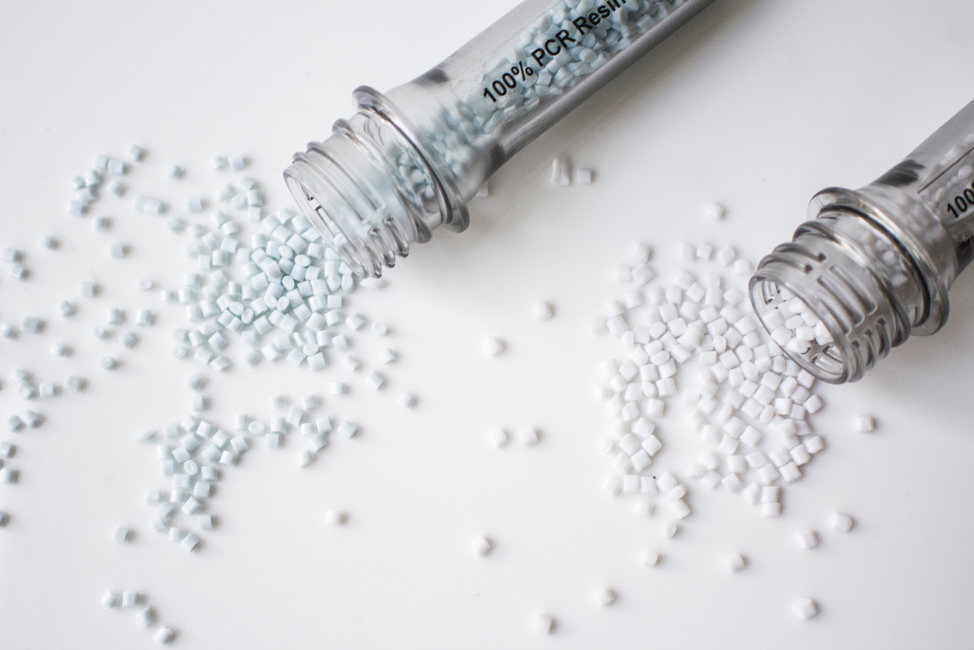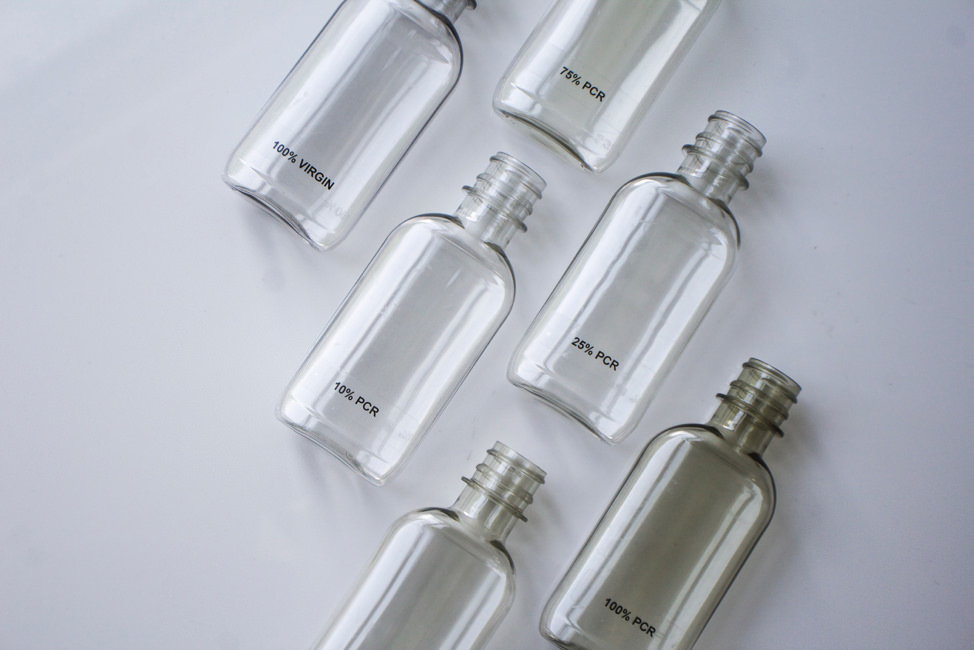
Bottles and jars produced using Post-Consumer Resin (PCR) represent a growing trend in the packaging industry – and PET containers are at the forefront of that trend. PET (or Polyethylene terephthalate), typically produced from fossil fuels, is one of the most common plastics in the world - and it is one of the easiest plastics to recycle. This makes manufacturing Polyethylene terephthalate (PET) with PCR content a high priority for Brand Owners. These bottles can be produced with anywhere between 10 percent and 100 percent-PCR content – although incremental content percentages do require a willingness of Brand Owners to compromise clarity and color aesthetic.
● What is PCR?
Post-consumer recycled content, often referred to as PCR, is material that is made from the items that consumers recycle every day, like aluminum, cardboard boxes, paper, and plastic bottles. These materials are typically collected by local recycling programs and shipped to recycling facilities to be sorted into bales, based on the material. The bales are then purchased and melted (or ground) into small pellets and molded into new items. The new PCR plastic material can then be used for a variety of finished products, including packaging.
● The Advantages of PCR
The use of PCR materials is a packaging company's response to environmental sustainability and its responsibility for environmental protection. The use of PCR materials can reduce the accumulation of original plastic waste, achieve secondary recycling, and save resources. PCR packaging also matches the quality of regular flexible packaging. PCR film can offer the same level of protection, barrier performance, and strength as regular plastic film.
● The Impact of PCR Proportion In Packaging
The addition of different contents of PCR materials will have a significant impact on the color and transparency of the packaging. It can be seen from the figure below that as the PCR concentration increases, the color gradually becomes darker. And in some cases, adding too much PCR may affect the chemical properties of the packaging. Therefore, after adding a certain proportion of PCR, it is recommended to do a compatibility test to detect whether the packaging will have a chemical reaction with the contents.

Post time: Apr-10-2024
